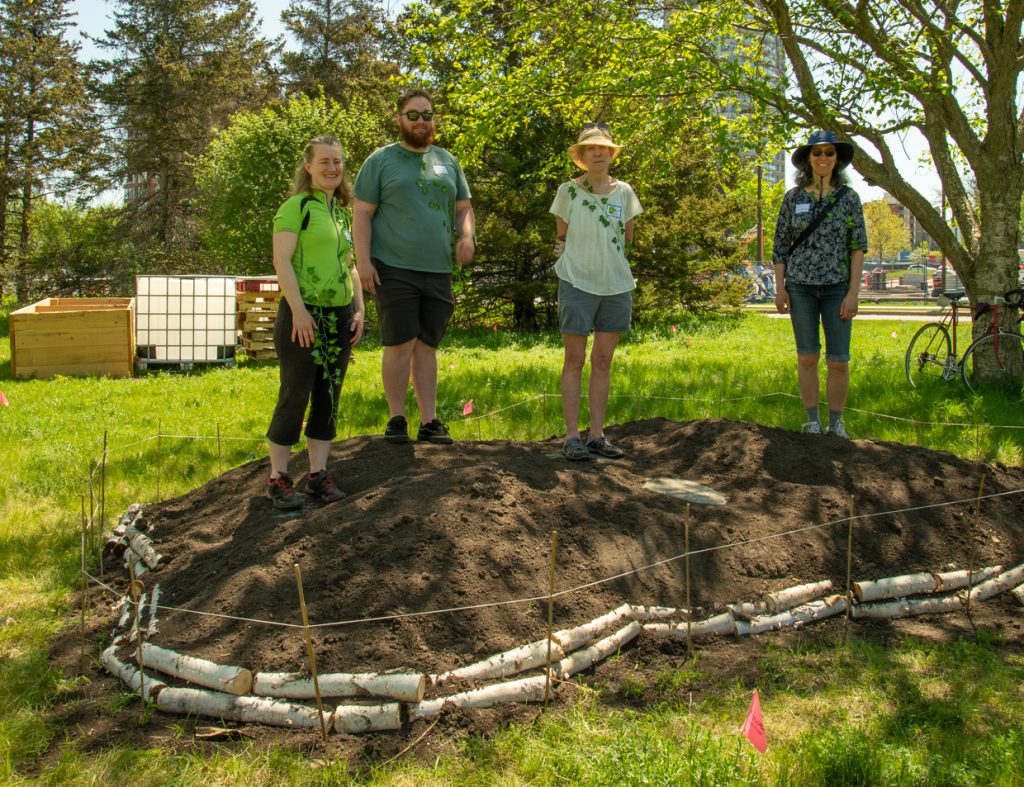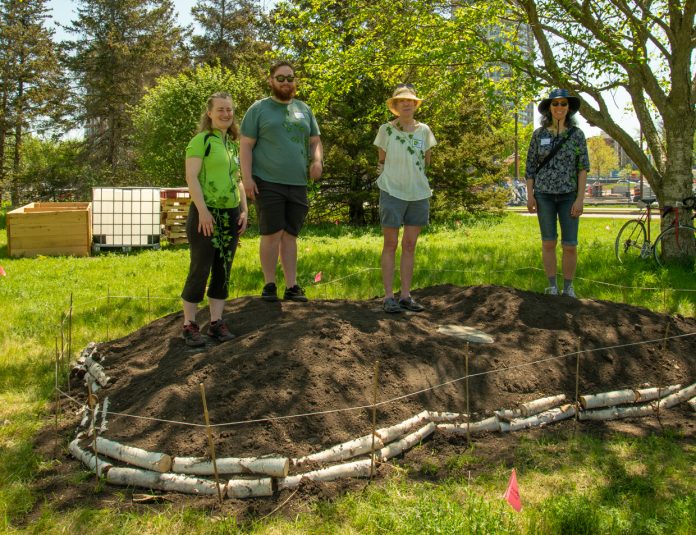
Submitted by Susan McClelland/Goldenrod Community Garden
Thousands of species of plants rely on animals to help them reproduce by carrying pollen from one flower to another. These animals are known as pollinators, and they are vitally important to natural ecosystems and our agri-food system?—up to 30 per cent of the plants we eat require pollination. Pollinators provide essential services to farmers, gardeners and natural ecosystems. Locally, our native pollinators include hundreds of species of bees, flies, butterflies and moths, beetles, ants and even some birds.
Populations of many native pollinators are in decline, including the Monarch butterfly and several species of bumblebees. Providing good quality habitat, food and water sources—as well as reducing or eliminating pesticide use—helps restore and maintain these critical species. Choosing plants that attract various pollinators to our gardens is an easy and cost-effective way to help protect native pollinators. By establishing a pollinator garden within the boundaries of Goldenrod Community Garden (GCG), we will not only provide a reliable quality food source and habitat for our local pollinator populations, but also provide pollinator services to our gardeners and adjacent ecosystems.
Like people, pollinators have different tastes and don’t all eat the same plants. Therefore, it is important that a pollinator garden includes both flowering and non-flowering plant species which are attractive to various native pollinators. Unlike people, pollinators can’t change their diets, and since many of the popular flowers sold in garden centres and nurseries come from Europe and other countries, they are not a useful food source for native pollinators. Native plants provide food but also habitat where our native pollinator populations can lay their eggs, thus ensuring survival.
Many pollinator-friendly native plants are familiar to Ottawa gardeners, including Purple Coneflower (Echinacea purpurea), Black-eyed Susan (Rudbeckia hirta) and New England Aster (Symphyotrichum novae-angliae).
However, there are lots of other beautiful flowering plants which are less familiar, such as Cardinal Flower (Lobelia cardinalis) and Wild Columbine (Aquilegia canadensis). While less familiar often means harder to find, we are fortunate in the Ottawa area to have several nurseries and small-scale growers that specialize in native plants, such as the Ferguson Tree Nursery (fergusontreenursery.ca),
Planning is key to a successful pollinator garden. Staggering bloom times of the various plants will provide a steady source of pollen food over the growing season. Knowing which plants attract which pollinators, as well as provide visual interest, is important. Knowing which plants attract which pollinators increases the effectiveness of the garden.
For example, Monarch butterflies lay their eggs in Milkweed and feed from it during various stages of the insect’s life cycle. As well, planting a large group of the same plant helps pollinators find the flowers and collect pollen efficiently without requiring lots of energy from them. A well-planned pollinator garden is also visually attractive, which draws visitors and offers opportunities to educate them on the value and importance of protecting and nurturing local pollinators.
GCG’s pollinator garden was built on the May 7-8 weekend. A second garden is planned for the upcoming fall. Members of the Pollinator Garden Committee have been researching native plants to identify good candidates and find where they can be sourced locally. Some members of the GCG community have started seeds obtained from the Ottawa Wildflower Seed Library.
However, the committee has bought most of the plants locally. Some native plants are aggressive/invasive, and members are being careful to avoid introducing these plants into the pollinator garden. Committee members have also been reaching out to other pollinator gardens and knowledgeable people in the Ottawa area for information. The initial gardens will be small?—eight feet by eight feet?—but its expansion is anticipated in the future.
The Pollinator Garden volunteers look forward to sharing the garden with members and the entire community soon.
